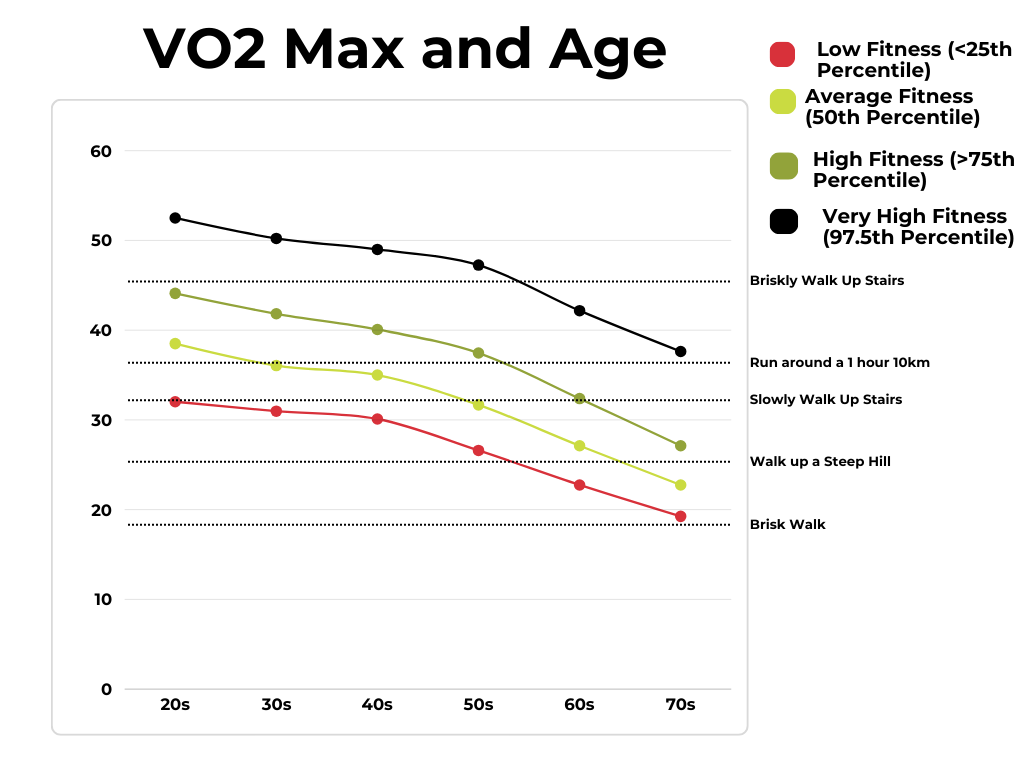The Healthy Aging Assessment
Maintaining your physical function as you age can feel like an overwhelming task – what should I focus on? Strength? Balance? Cardio? Flexibility? How do I know that what I am doing is effective? We know that physical function will decline with age – but the speed at which this happens is NOT fixed.
This is the purpose of the Healthy Aging Assessment – to empower people with information on their physical function, give them support on how to maintain or improve different domains, and to be able to track these things over time. Our clinical team has identified some of the most important domains of physical health that are related to continuing to be able to do as many of the things you love as possible – and built an assessment that allows you to see where your function is compared to your sex and age group. This can turn your physical health from a mystery to something that you can tell whether you are improving or on track.
Areas of Physical Health
Strength
Cardio Fitness
Balance
Flexibility
Our clinicians will work with you to establish your baseline, and then set goals together based on what you want to continue to do. Whether that is hiking into your 80s, picking up grandkids from the floor, or playing pickleball as long as humanly possible.
Did you know we also offer a cognitive assessment to get a snapshot of your cognitive health?
Areas of Health:
Take VO2max for example – this is one of the best metrics we have our cardio fitness, is something we can measure easily in the clinic, and is trainable at any age. The list of benefits of training this is huge – improving your VO2max is associated with the following health benefits:
Reduced risk of:
heart attack
coronary artery disease
stroke
diabetes
cancer
high blood pressure
death by any cause – going from below average for your age to above average can reduce your risk of death by any cause (something called “all cause mortality”) by 41!% This is more impactful than smoking!
But doesn’t your cardio fitness reduce with age? This is true – but this graph illustrates the benefit of maintaining a high level throughout a lifespan. This can be the difference between being able to walk up stairs or hike the North Shore into your 70s and 80s and struggling a brisk walk.
Is it too late?
What if you already have noticed some decline – or are already a senior and feel like your days of fitness are in the past? We have specifically selected domains of physical health that are trainable at any age. To take one example – your upper and lower body strength. While the peak strength you are able to achieve will reduce with age – this can be improved by starting a strength program even at an advanced age. With the same exercise routine - a group of 20 year olds and a group of 60 and 70 year olds had a similar improvement in their leg strength with 8 weeks of training – whether they were males or females. While starting from a high baseline can help reduce the risk of injury – its never too late to start.
Book your Healthy Aging Assessment today and take the first step toward staying active, strong, and independent for years to come!
-
Kittelsen et al. 2021. Responses to Maximal Strength Training in Different Age and Gender Groups. Frontiers of Physiology.
Mandsager et al 2018. Association of Cardiorespiratory Fitness With Long-term Mortality Among Adults Undergoing Exercise Treadmill Testing. JAMA






























